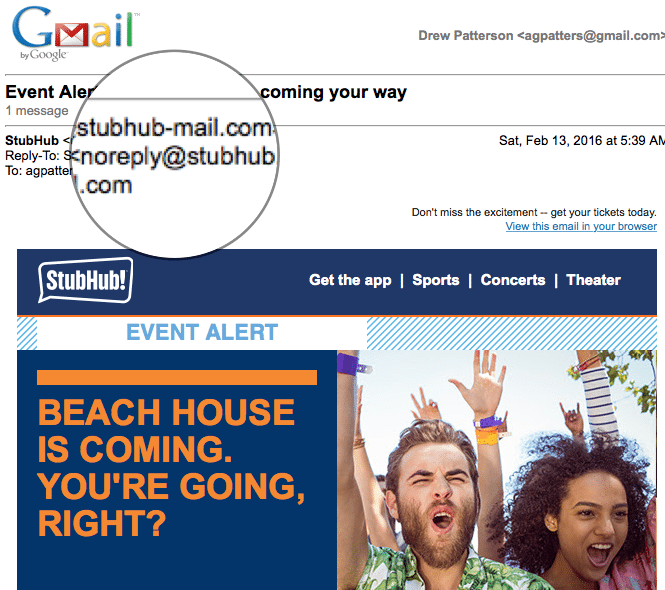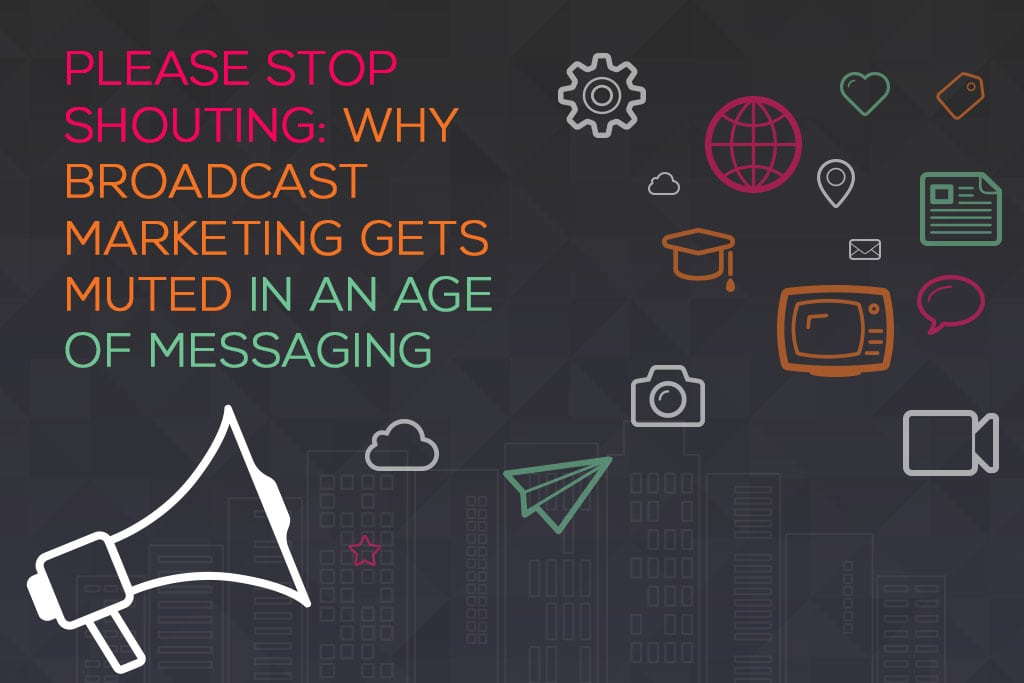Skift Take
As messaging establishes itself as the dominant form of modern communication, consumers are increasingly tuning out to broadcast marketing. Smart travel brands are adapting by honing their conversational skills and welcoming a two-way dialogue with customers.
This sponsored content was created in collaboration with a Skift partner.
The emergence of messaging – real-time, two-way channels like Twitter, Facebook Messenger, and SMS – as a dominant form of communication demands that marketers to hone their skills as thoughtful conversationalists, not just orators.
With broadcast marketing and reach-frequency models becoming increasingly inadequate as standalone strategies for brand development, the conversational approach that engages consumers in a dialogue has become an essential part of the equation.
Boy It’s Loud In Here!
Reach-frequency models have served as the bedrock of brand campaigns for decades. While the tools and targeting have grown far more sophisticated, even Don Draper would recognize the basic marketing structure used today. With the right message and sufficient impression frequency, a brand could imprint itself in the consumer’s mind. Campaigns were thus measured around impressions, and marketers tested for aided and unaided recall to understand whether they were changing perceptions. Turn the dials and revenue would follow.
This approach is fundamentally broadcast in nature. Brands disseminate their message as widely as possible, using broadcast channels to reach their audience base on its media consumption patterns. Campaigns are monologues, where brands make their case and consumers listen. And for decades, broadcast has proven to be a powerful vehicle for brand development.
But while media consumption has evolved from broadcast channels to two-way messaging networks, this broadcast muscle memory is hard for marketers to escape. They struggle to break the habit even when tapping into channels geared for exchange. Take, for example, this email concert announcement from Stubhub. For a fan fighting to stay relevant (or at least relive an indie band from the ‘00s), a Beach House concert announcement is a timely and relevant. But sending the message from a “noreply@” domain precludes conversation and dialogue; the brand has made it clear they expect customers to be seen but not heard.
Academic research provides quantitative support for the intuitive truth that strong relationships require dialogue. In his 2015 study “Twitter for Two”, University of Stockholm professor Jonas Colliander compared the impact of messaging for brands that engaged Twitter followers in dialogue to those that used Twitter solely for broadcast messaging. His experiment revealed 14% greater purchase likelihood for brands that engaged in a dialogue. Colliander sums up the findings, saying “true customer engagement will require a shift from one-way broadcast reaching all customers to two-way dialogue with each of them.”
When Consumers Turn Up The Volume
An alternative to staid one-way marketing can be seen in the conversational approach of new brands unburdened by a broadcast legacy. Ecommerce brands like Warby Parker have burst into consumer awareness in the past five years, and their conversational approach in messaging channels demonstrates part of their appeal.
 Great conversationalists are first and foremost great listeners; they are tuned in to others’ perspectives. So too with these brands: smart, conversational marketing starts with listening to the customer’s needs and responding with empathy. As the example at the right demonstrates, Warby takes an edge case they cannot serve – international shipping – and provides an empathetic, useful response, delivered by a real Warby employee.
Great conversationalists are first and foremost great listeners; they are tuned in to others’ perspectives. So too with these brands: smart, conversational marketing starts with listening to the customer’s needs and responding with empathy. As the example at the right demonstrates, Warby takes an edge case they cannot serve – international shipping – and provides an empathetic, useful response, delivered by a real Warby employee.
Effective conversational marketing also starts with service, not revenue. Again, the Warby example shows how brand messages can start with a personal, useful response that delivers value to the consumer. Of course, beginning with the proposition of better service can also lead to revenue opportunities; solving international shipping leads to more sales.
How Travel Marketers Can Be Heard
For travel marketers in particular, messaging holds tremendous potential. Travel is an emotionally valent category, where consumers are eager to engage in dialogue. To execute on this opportunity, marketers should consider three guidelines:
- Distribute responsibility for messaging throughout organization. One way to show consumers respect is by ensuring a complete, accurate response. As discussed in “Birth of Messaging Services => Death of Call Centers,” accuracy requires empowering employees throughout the organization to participate, because the answers to messaging inquiries often sit in the hands of on-the-ground employees. Social media teams or marketers lack the context to respond with a satisfying answer
- Devolve control to maintain a human voice. A side benefit of distributing responsibility is the ability to respond in a human voice.Customer service expert Blake Morgan argues in her Forbes column that, “If you want people to like your brand, it’s better for your brand to be likeable. Part of that is loosening up and engaging with customers.” Authenticity sits atop oftoday’s brand value pyramid; empowering employees to speak directly to the consumer in their voice cements an authentic relationship.
- Equip your brand with the tools to maintain one conversation with the customer. By their nature of their service, travel brands must coordinate a response across teams and employees and manage it across multiple communication channels – email, SMS, and apps. A single shared inbox enables team members to collaborate internally, capture interactions with a given consumer, and eliminate the inefficiency of managing separate tools for email, SMS, Facebook, Twitter and countless other messaging channels.
In the Post-App Economy, travel brands must be able to adeptly engage with their customers in conversations across channels. And to effectively capture customer attention today, marketers must stop shouting and start engaging.
To see what conversational marketing looks like in practice, send us a message.
This post is part of a series about the future of messaging in the travel industry and was created collaboratively Checkmate and Skift’s branded content studio, SkiftX. Read the rest of the series below:
Have a confidential tip for Skift? Get in touch
Tags: marketing, messaging, post app economy

